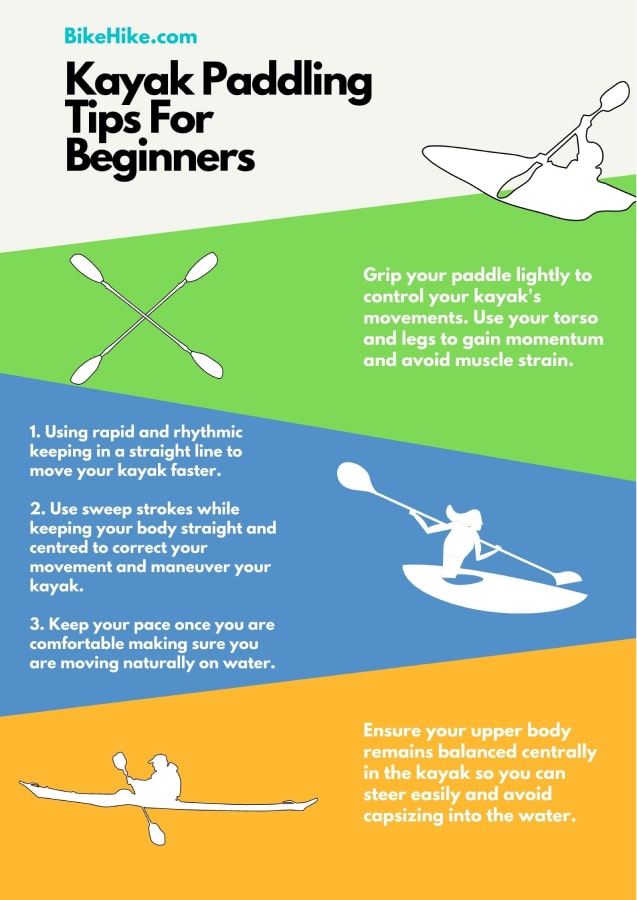
Kayaking Techniques for Beginners: A Comprehensive Guide
Kayaking, the graceful dance of paddle and water, offers a unique blend of adventure, tranquility, and physical activity. Whether you’re drawn to the serene glide across a calm lake or the thrilling challenge of navigating a rushing river, mastering fundamental kayaking techniques is paramount for both enjoyment and safety. This comprehensive guide will equip beginners with the knowledge and skills needed to confidently navigate the waters.
I. Choosing Your Kayak and Gear:
Before even touching the paddle, selecting the right kayak and gear is crucial. Kayaks come in various types, each designed for a specific purpose:
- Recreational Kayaks: These are the most common type for beginners, designed for stability and ease of use on calm waters. They’re wider and shorter than other types, providing excellent stability.
- Touring Kayaks: Longer and narrower, these kayaks are designed for longer distances and open water. They offer better speed and tracking but require more skill to handle.
- Whitewater Kayaks: Built for navigating rapids and challenging currents, these kayaks are shorter, more maneuverable, and significantly more robust. Beginners should avoid these until they have considerable experience.
- Sit-on-top Kayaks: These kayaks have an open cockpit, making them self-bailing (water drains easily) and generally more stable. They’re a great choice for beginners.
- Sit-inside Kayaks: These kayaks have an enclosed cockpit, offering better protection from the elements. They require a spray skirt to prevent water from entering.
Beyond the kayak itself, essential gear includes:
- Paddle: Choose a paddle appropriate for your height and kayak type. Proper length is crucial for efficient paddling.
- Personal Flotation Device (PFD): This is non-negotiable. Always wear a properly fitted PFD.
- Spray Skirt (for sit-inside kayaks): Prevents water from entering the cockpit.
- Whistle: A vital safety device for signaling for help.
- Waterproof bag: To protect your belongings from water.
- Appropriate clothing: Dress in layers to adapt to changing weather conditions. Avoid cotton, which retains water.
- Sunscreen and hat: Protect yourself from the sun.
II. Getting Comfortable in Your Kayak:
Before venturing onto the water, familiarize yourself with your kayak. Practice getting in and out in a safe, shallow area. For sit-inside kayaks, practice using the spray skirt. Ensure you’re comfortable with the seating position and have easy access to your paddle and safety equipment.
III. Basic Paddling Techniques:
Efficient paddling is the foundation of kayaking. Here are the key techniques:
- Grip: Hold the paddle with a comfortable, relaxed grip. Your hands should be approximately shoulder-width apart.
- High Angle Paddle Stroke: This stroke is ideal for forward propulsion in calm water. Enter the water near your feet, pull the paddle back towards your waist, then lift it clear of the water. Rotate your torso as you pull.
- Low Angle Paddle Stroke: Used for maneuvering and turning, this stroke involves entering the water closer to the kayak’s side and pulling the paddle through a shorter arc.
- Sweep Stroke: This stroke is used for turning. Place the paddle in the water near the stern and sweep it in a wide arc outwards.
- Reverse Sweep Stroke: Similar to the sweep stroke, but used to turn in the opposite direction.
- Draw Stroke: Used to move the kayak sideways, this involves placing the paddle in the water and pulling it toward the kayak.
- Back Paddle Stroke: This stroke is used to slow down or reverse the kayak. Place the paddle in the water and push it away from the kayak.
IV. Mastering Maneuvers:
Once you’ve mastered the basic strokes, you can start practicing maneuvers:
- Turning: Combine sweep strokes, low angle strokes, and rudder strokes (if your kayak has a rudder) to execute smooth turns.
- Forward and Reverse Movement: Practice smooth transitions between forward and reverse paddling.
- Stopping: Use back paddling to gradually slow down and stop the kayak.
- Sideslipping: Use draw strokes to move sideways, useful for navigating tight spaces.
- Eddy Turns: In moving water, learn to use the calmer water behind obstacles (eddies) to turn. This requires more advanced skills and should be practiced under supervision.
V. Safety Considerations:
Safety should always be your top priority when kayaking:
- Check the weather forecast: Avoid kayaking in strong winds, storms, or extreme temperatures.
- Let someone know your plans: Inform a friend or family member of your kayaking route and expected return time.
- Wear a PFD: Never kayak without a properly fitted PFD.
- Be aware of your surroundings: Pay attention to other boaters, swimmers, and obstacles in the water.
- Know your limits: Don’t push yourself beyond your skill level. Start in calm waters and gradually progress to more challenging conditions.
- Learn basic rescue techniques: Familiarize yourself with self-rescue techniques and consider taking a kayaking safety course.
- Carry a whistle and other safety equipment: This allows you to signal for help in an emergency.
- Be mindful of wildlife: Maintain a safe distance from wildlife and avoid disturbing their habitats.
VI. Practice and Progression:
Consistent practice is key to improving your kayaking skills. Start in a calm, protected environment like a lake or slow-moving river. Gradually increase the difficulty of your paddling as your skills improve. Consider joining a kayaking club or taking lessons from a certified instructor to learn advanced techniques and safety procedures.
VII. Enjoying the Journey:
Kayaking is not just about mastering techniques; it’s about embracing the experience. Take your time, appreciate the beauty of the surroundings, and enjoy the serenity of the water. With practice and patience, you’ll find yourself gliding effortlessly across the water, enjoying the freedom and exhilaration that kayaking offers. Remember that continuous learning and respecting the water are crucial for a safe and enjoyable kayaking experience. So, grab your paddle, get on the water, and start your kayaking adventure!



